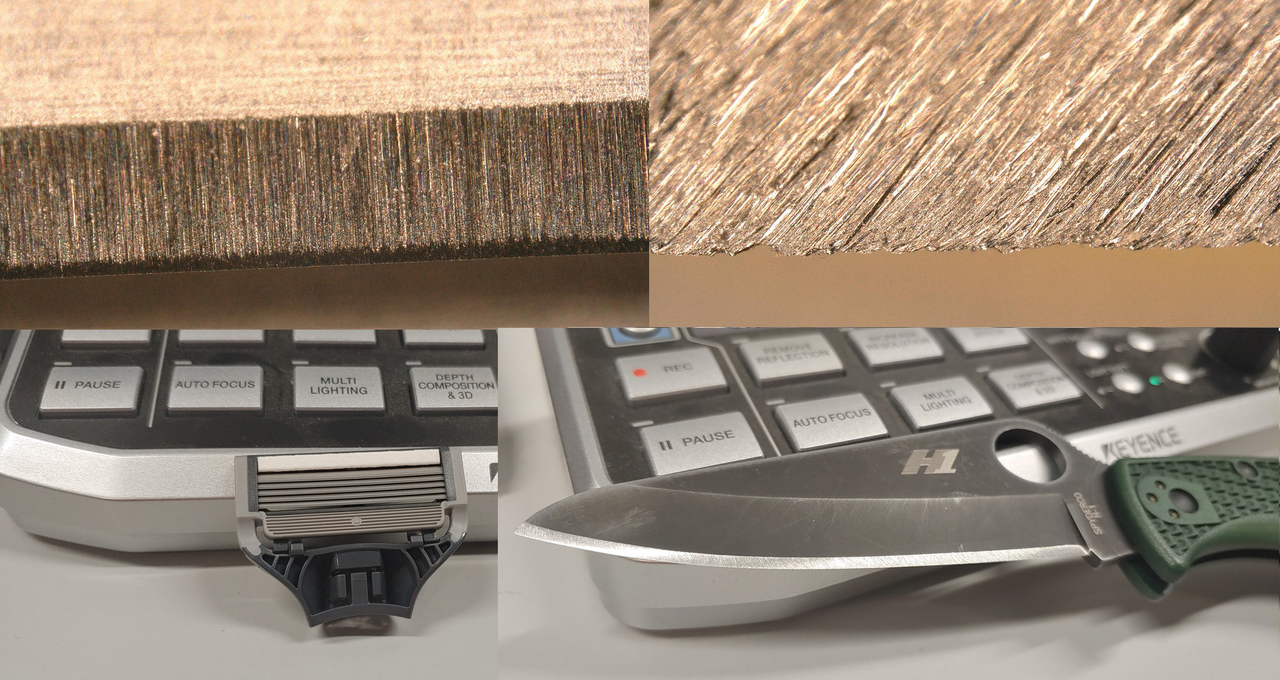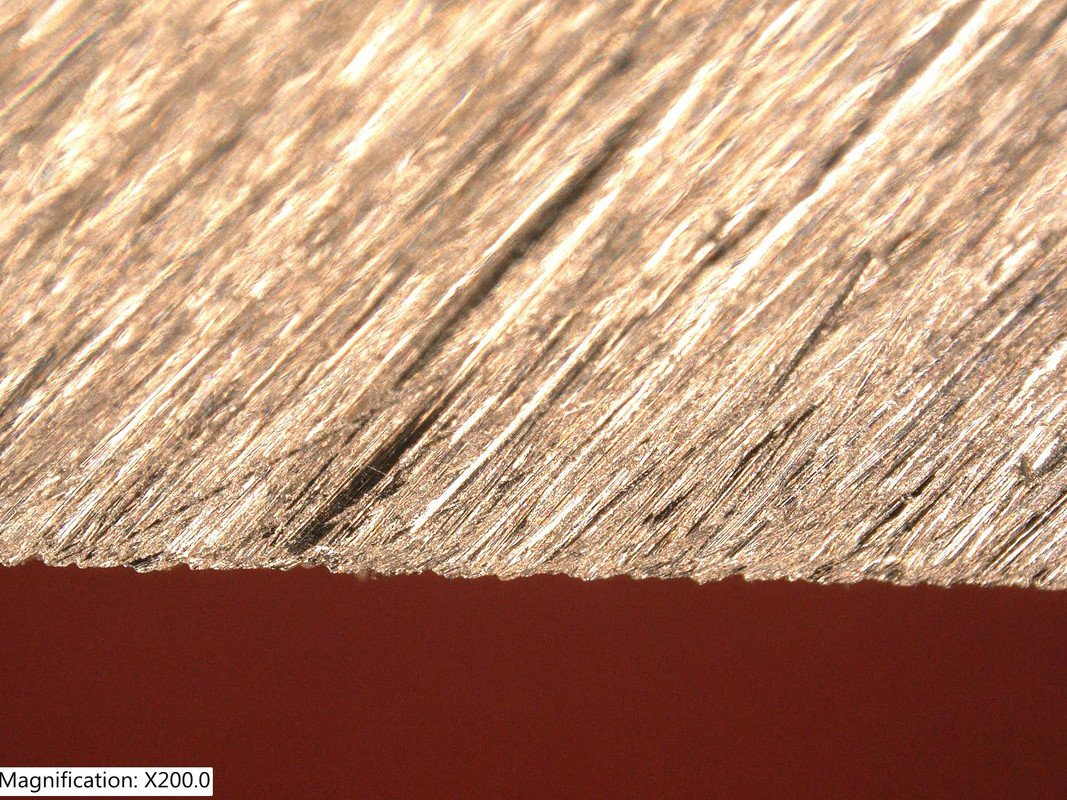very interesting
how do you sharpen without relying on burrs if you can expand on that it is very interesting
like benuser said, it comes down to maintaining your knives well, and general experience.
for example I have a small pairing knife I sharpened at about 8 degrees per side, then applied a 15 degrees per side microbevel. lets say its dulled to the point I can roughly scrape off arm hairs.
through a combination of years of experience sharpening at that same angle, and knowing how sharpening at too acute of an angle gives a slicker feel like the knife is skating across the stone vs biting into it when I'm hitting the apex, I can tell by feel if my angle is good.
So I'll take a slightly dulled but still useable knife and touch it up quickly by feel on the line, and get it to cleanly shaving sharp.
minimizing burr formation is the key to a clean apex. whether you raise one or not, whether you polish up to 10,000 grit or use a rough 200 grit edge, the quality of your cutting edge comes down to minimizing the presence of a burr.
There are various schools of thought of how best to do this. Some rely on strops. Some cut into cork to try to remove the burr.
What I have found works best for me and my sharpening technique, is to finish my sharpening session with the absolute lightest stroke I can manage while still making full contact with the cutting edge.
for those familiar with the spyderco sharpmaker, to give some perspective, my final strokes on one are using a feather light touch to the point I don't have to secure the base in any way (left hand holding it down, a clamp, not even a wet towel under it) and it won't move. I'm using such light pressure I can take my left hand off the base.
Using a bench stone free hand the same concept applies. My last few strokes are using the lightest pressure I can,
using less than the weight of the knife itself.
Doing that and alternating sides each stroke is how I finish every edge.
Another thing that helps once you've got the basics down, is learn to sharpen to shaving sharpness at a lower grit than you can today. Once you do that, repeat at a lower grit.
You may surprise yourself down the road. The first time I achieved a shaving sharp edge, it took a stone in the 1,200-1,500 grit range. Than I did it on 1,000 grit. Then 800. Then 500. 400. 300. Eventually I got to the point where I could make a 200 grit edge sharp enough to roughly shave, no stropping or refining of the edge.
Here is an image of a finely sharpened razor blade right out of the box VS my favorite pocket knife sharpened to a (roughly) shaving sharp 200 grit edge:
Despite the incredibly coarse finish I managed to refine the apex fairly well by using an extremely light touch.
Here's a few more 200x images of that edge. I really like coarse edges for utility knives, and rarely take any cutting tool past 800-1,000 grit these days aside from culinary knives.
and a quick video of it scraping away some arm hair -
Vidsli - Simple video sharing
TLDR - Burrs are an invaluable tool for learning or ensuring your new bevel was properly set, but 90% of achieving the sharpest edge possible comes down to minimizing burr formation as best as possible.







